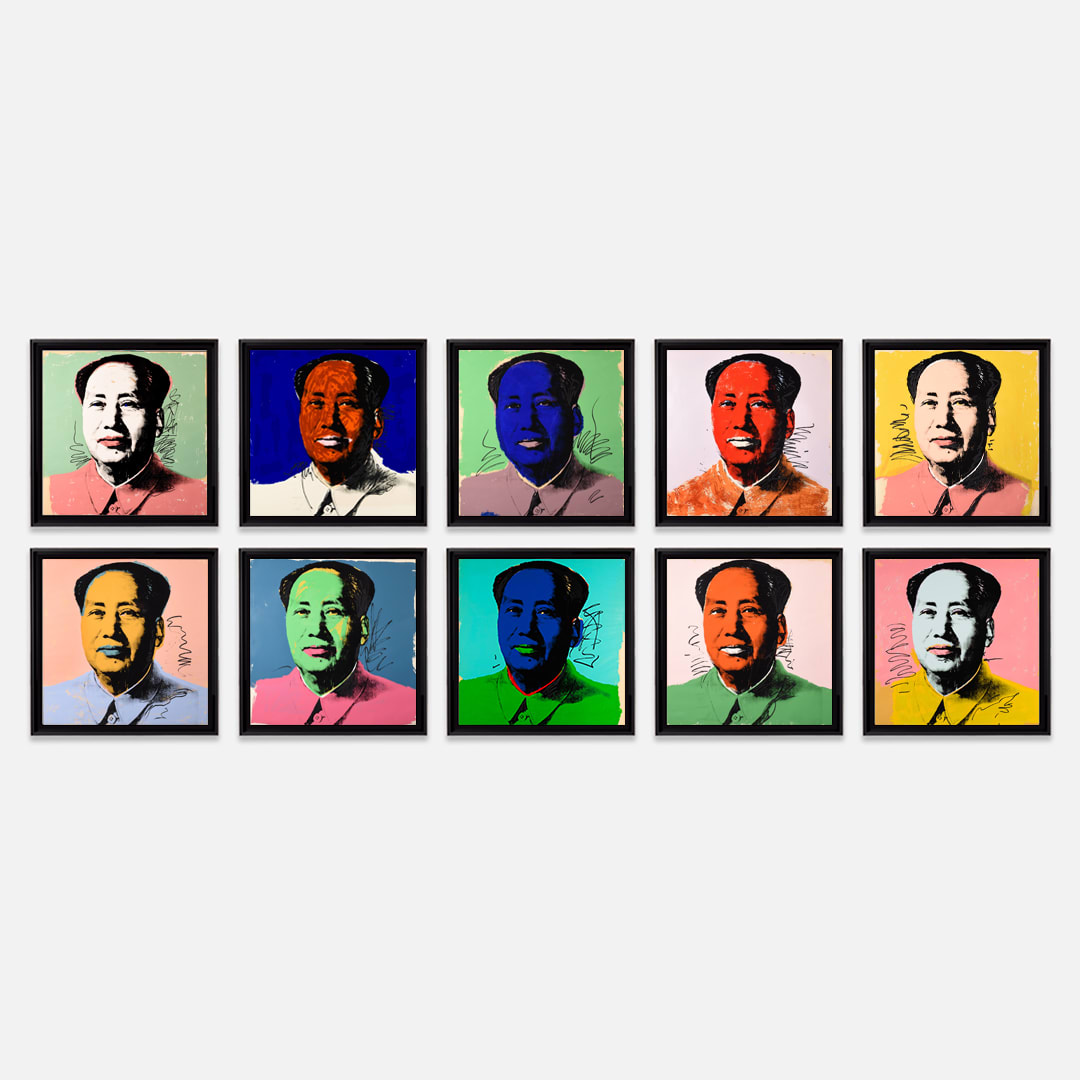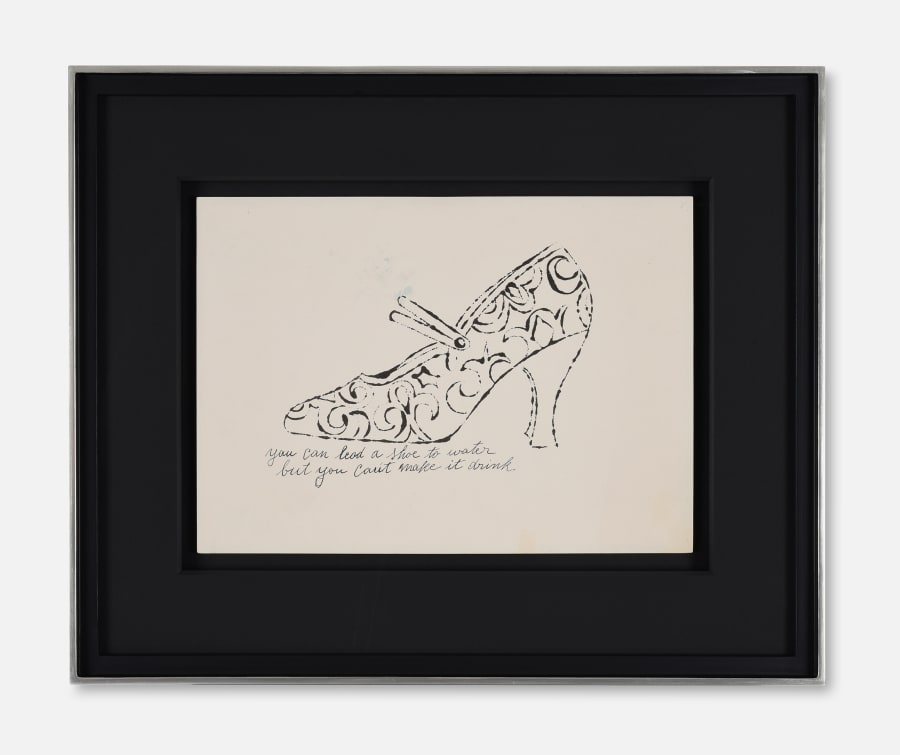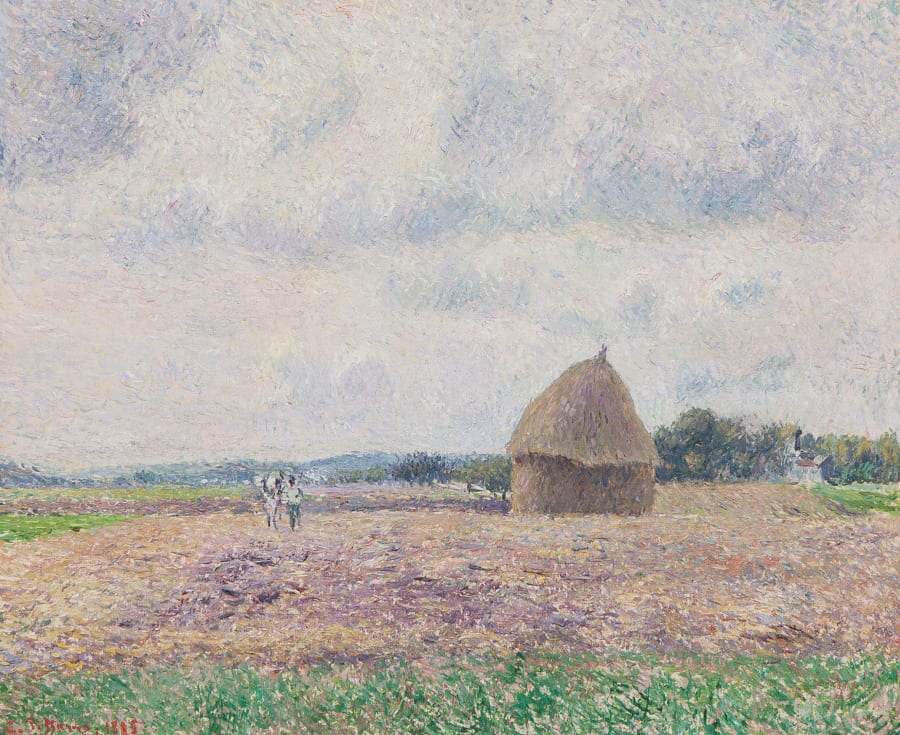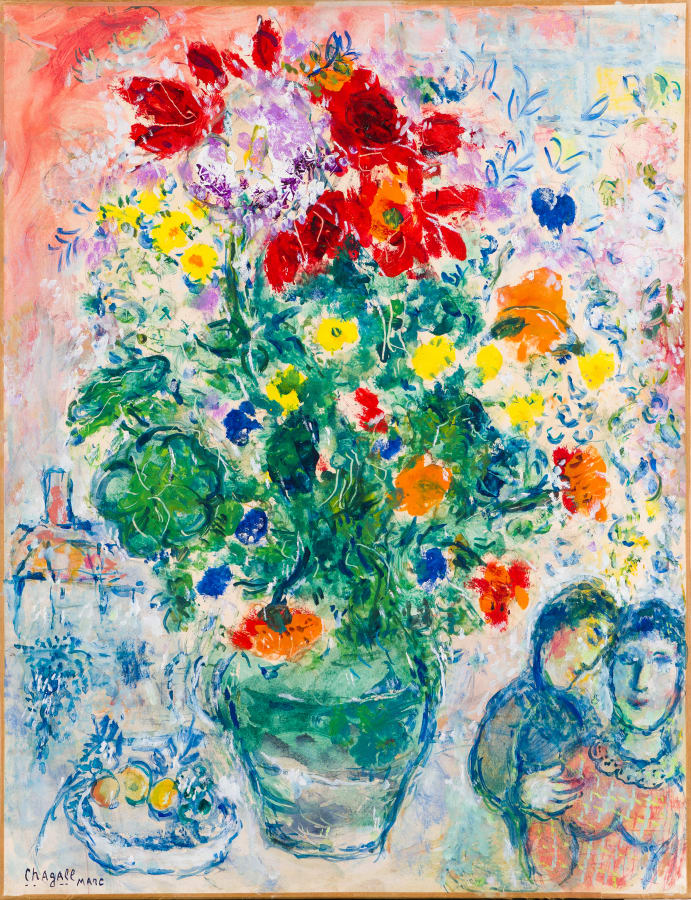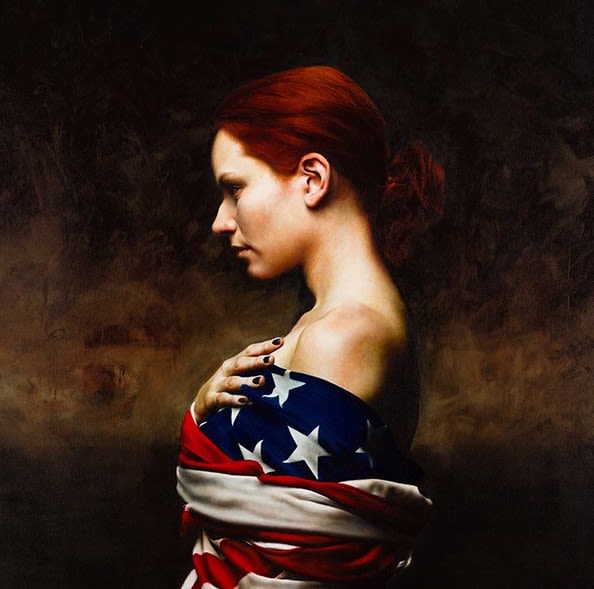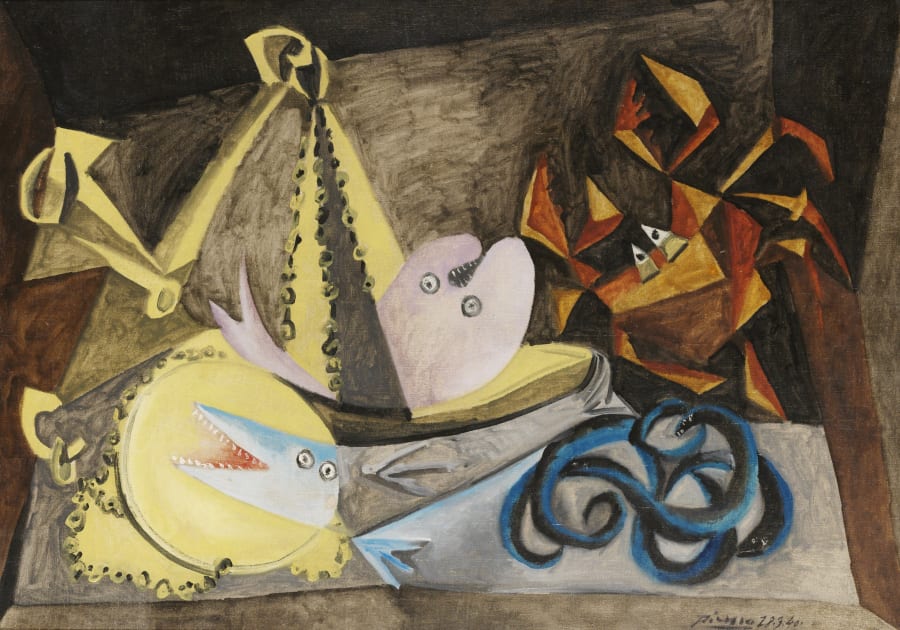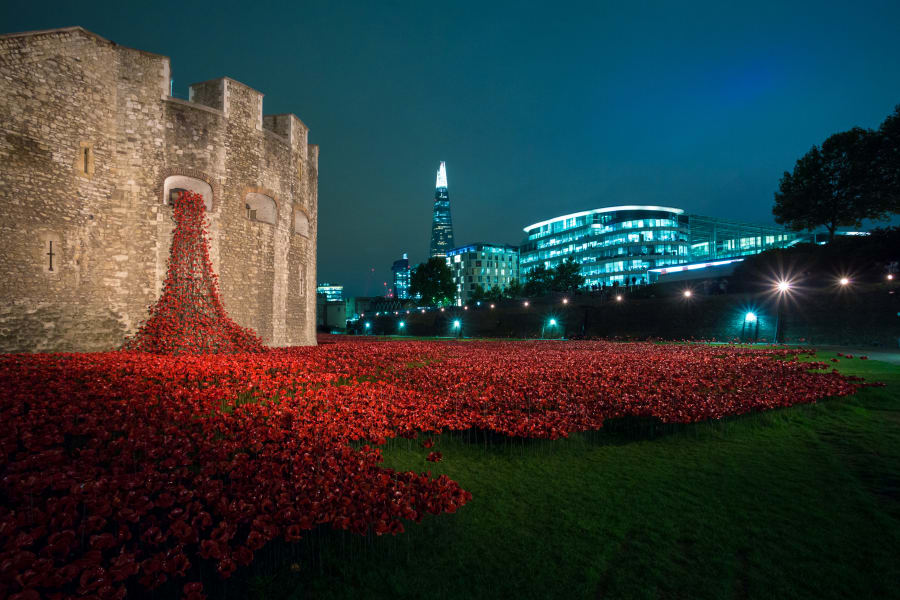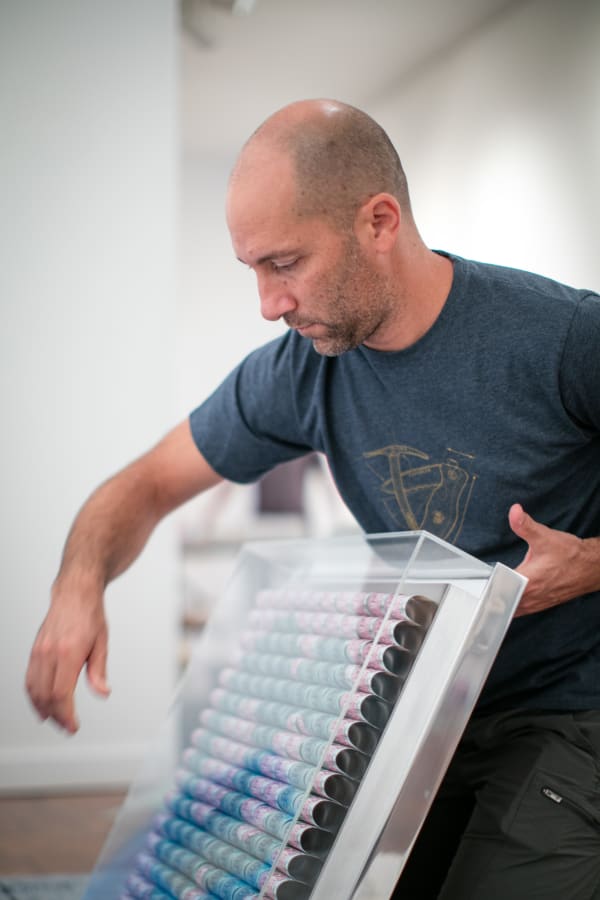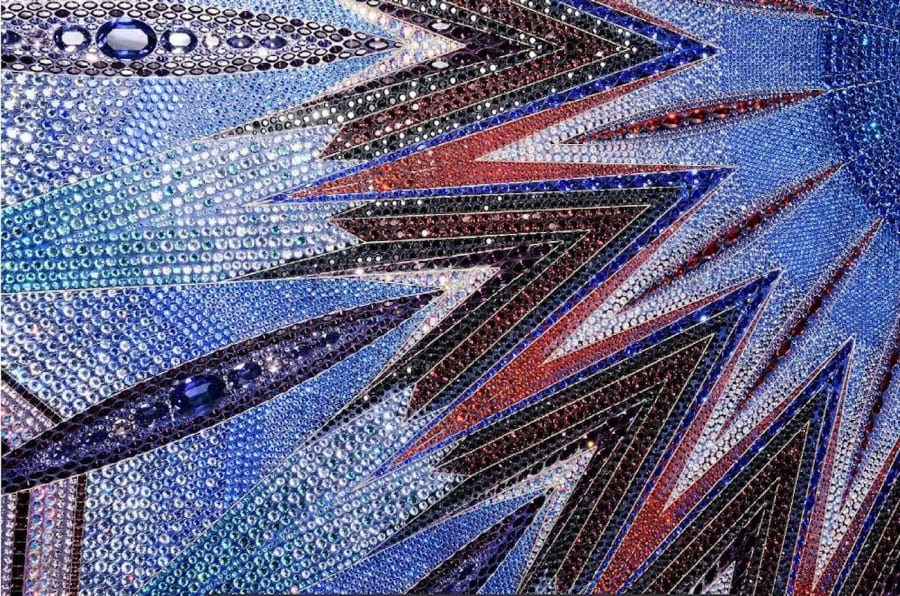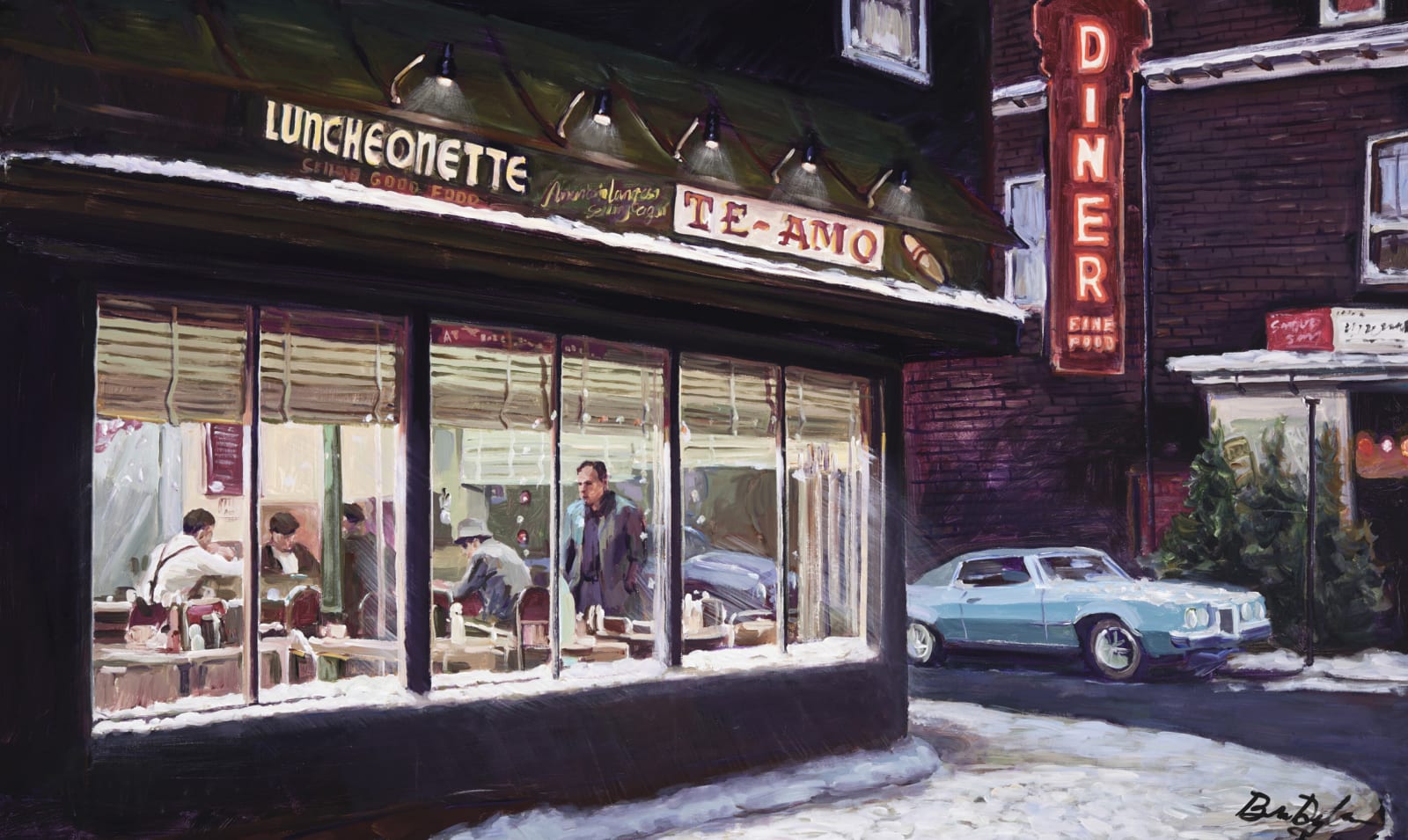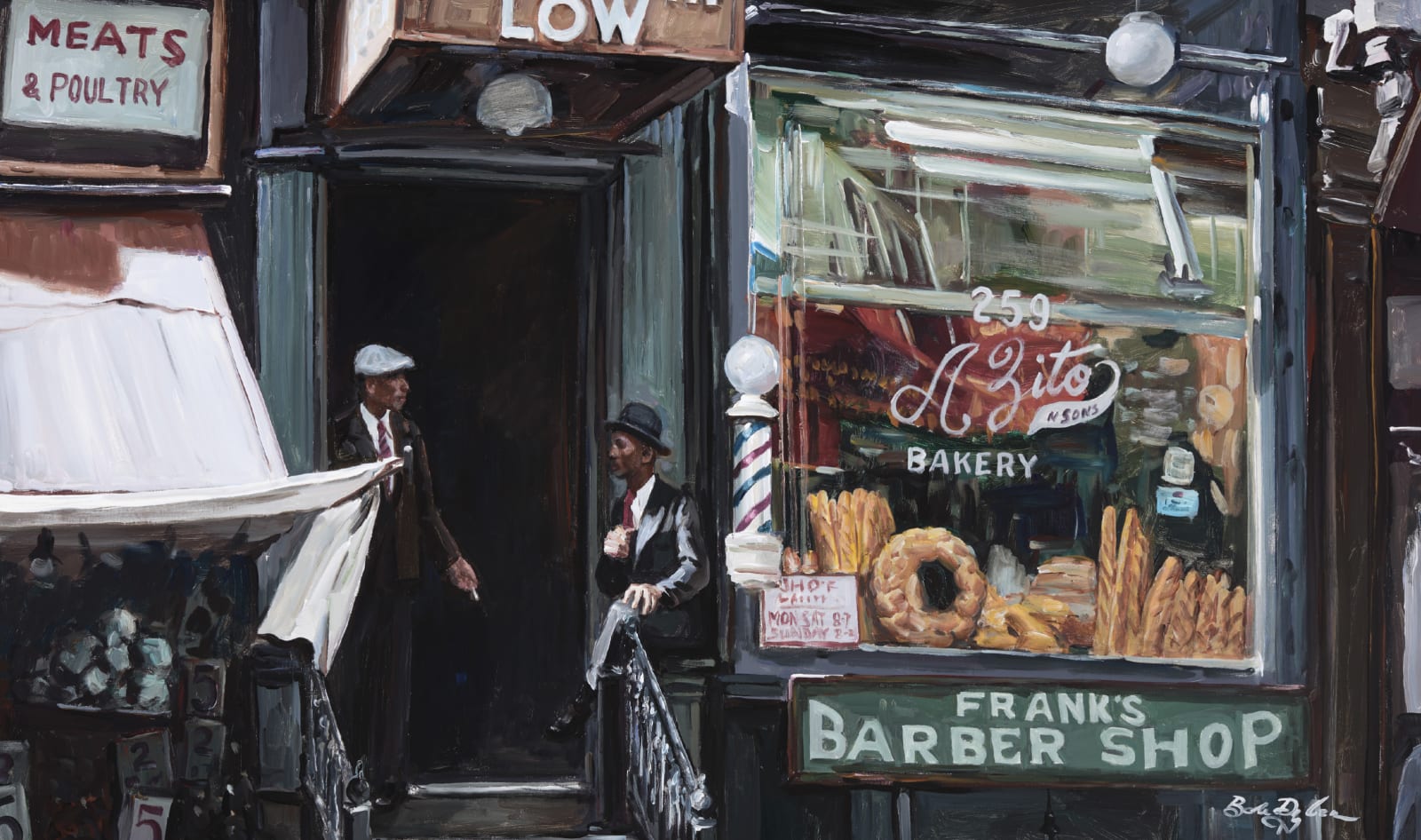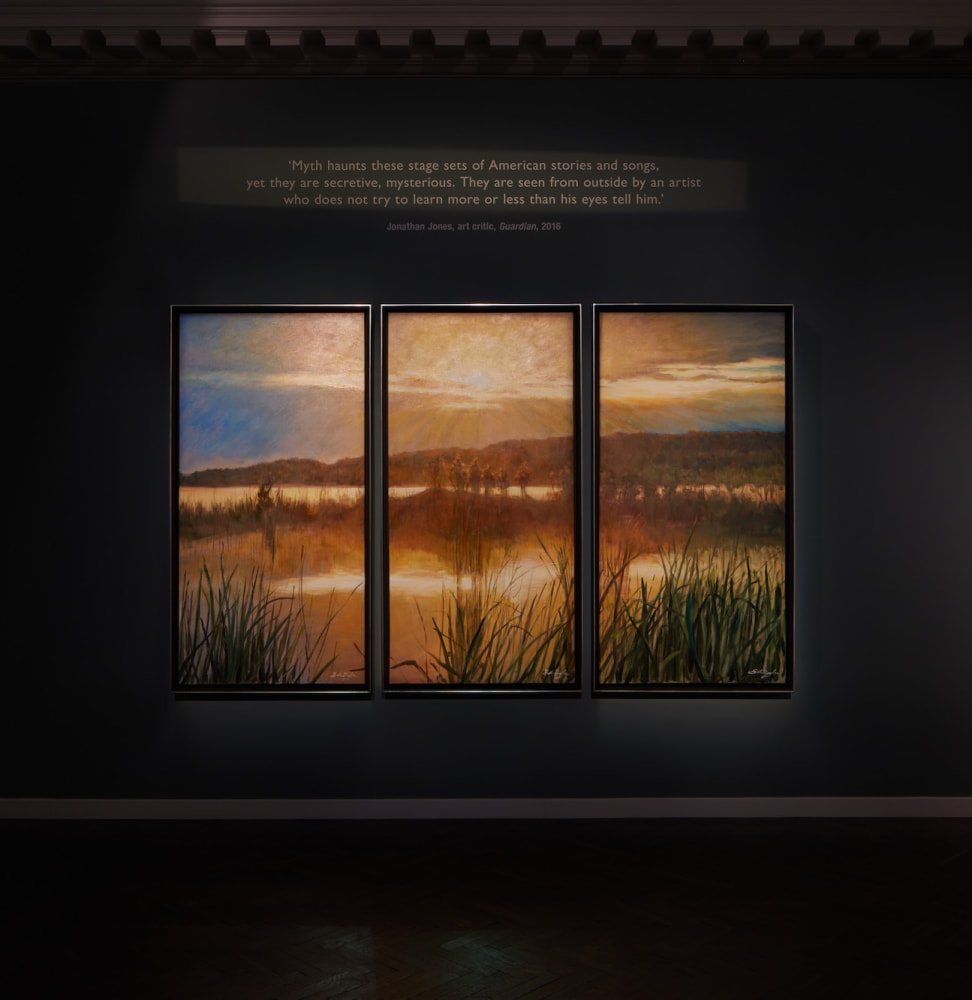

Andy Warhol: Hammer and Sickle
Andy Warhol (1928 – 1987) explored the opposing ideologies of communism and captialism in his thought-provoking Hammer and Sickle portfolio. Discover 5 Things to Know about this controverisal artwork.
If you are interested in adding to your collection, speak to one of our art consultants now - email us at info@halcyongallery.com

3. The Hammer and Sickle series is a sincere exploration of an original approach to representing a still life
These prints are remarkable for their political connotations, but they are also rich works of art that demonstrate a sincere interest from Warhol to explore the still life genre in innovative ways. The artist didn’t simply want to reproduce the communist symbol, he wanted to capture the hammer and sickle as real tangible objects. So, he went to a hardware store, bought a real hammer and sickle and went to work, photographing them from different angles under harsh lighting. The subsequent polaroids were the source images for his prints. Unlike many of his most iconic works, such as Campbell’s Soup Cans, Warhol captures these objects in three dimensions with vibrant reds and heavy-handed drawn lines that emphasise their shadows.

4. Hammer and Sickle featured in an exhibition entitled Still Lifes at Leo Castelli Gallery
Warhol first exhibited the Hammer and Sickle series at the Leo Castelli Gallery in New York in January 1977. The exhibition was entitled Still Lifes, an ironic and masterful title choice. The works exhibited are certainly still lifes, but the viewer would more likely associate the subject with communism. Warhol’s exhibition title is typical of the contrived naivety that he adopted as part of his public persona. By referring to these works as still lifes, he seems to imply that these objects could just as easily be swapped for a bouquet of flowers; it is as if he were unaware of the politically charged nature of his subject.
The exhibition was critically acclaimed, and writers focused not only on the work’s provocative meaning but also Warhol’s treatment of form. Art critic John Russell observed that ‘In these new paintings [Warhol] has taken something from sculpture ... something from architecture ... and something of painting ... and come up with an end result that combines imagination with punch.’
5. The inclusion of the brand of the Sickle is the ultimate Warholian joke
On the handle of the sickle, emphasised with boldly pronounced writing, Warhol includes the brand that made the product, Champion. By the 1970s, Warhol had fully established himself with a clear artistic identity and he enjoyed playing with people's expectations about his work. He had made his name originally by transforming Campbell’s trademark design into a celebrated work of art. This piece would go on to be recognised as a symbol of capitalism, not unlike the way that the Hammer and Sickle is a symbol of communism. Yet, the inclusion of the brand of the sickle reclaims these objects as commercial products.
If you are interested in adding to your collection speak to one of our art consultants today - email us info@halcyongallery.com


